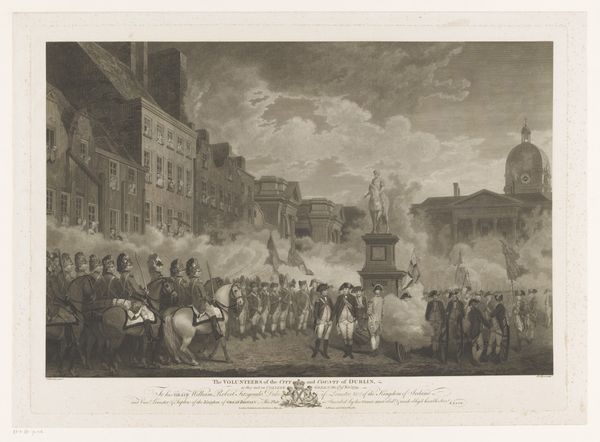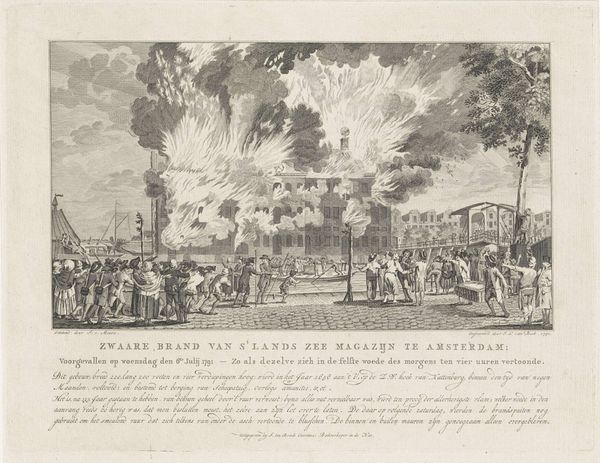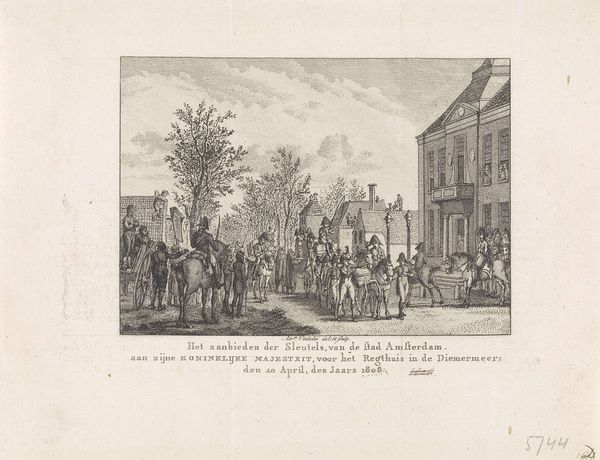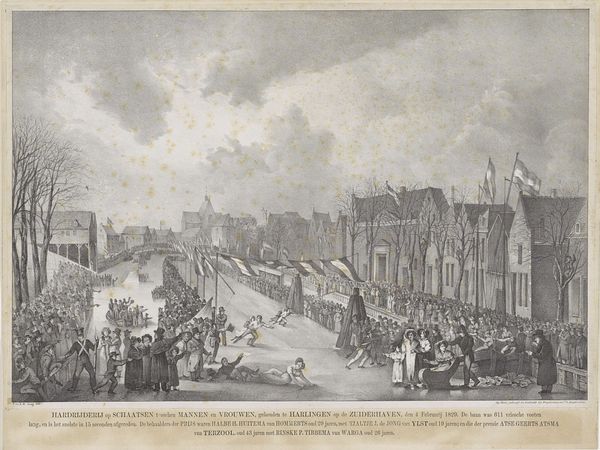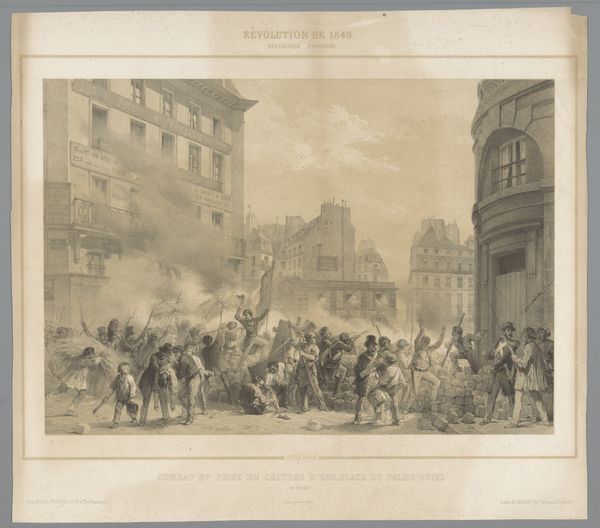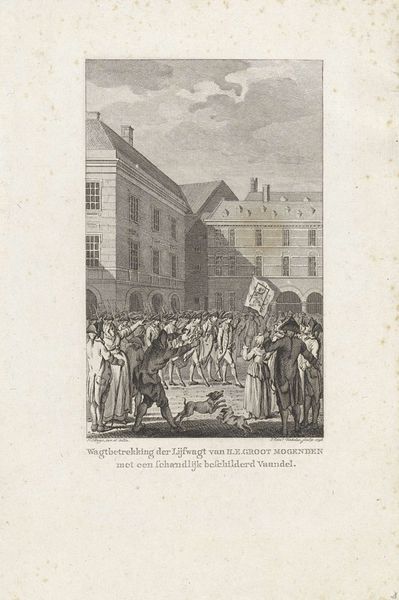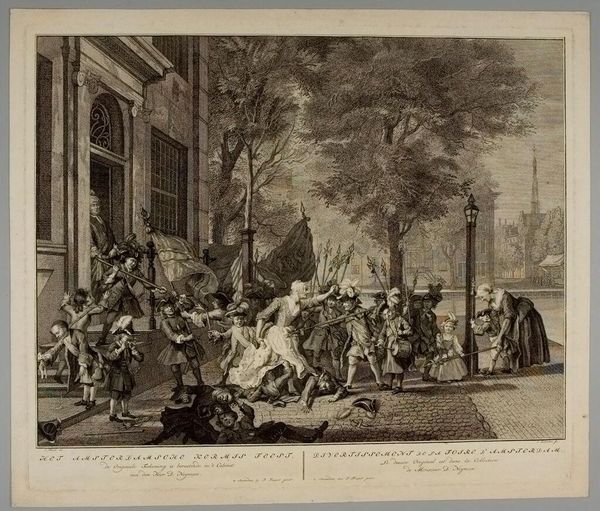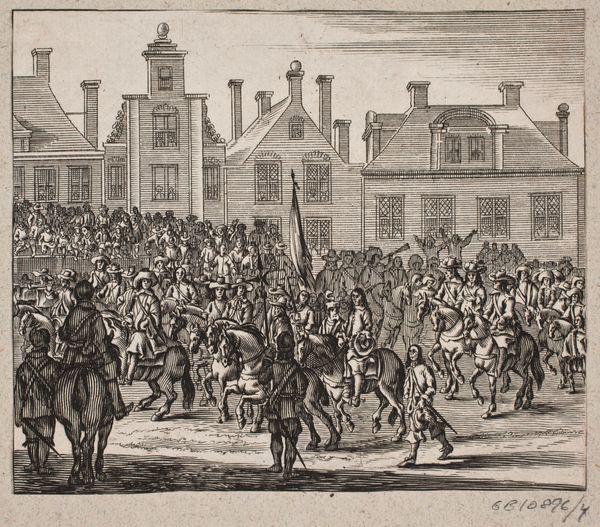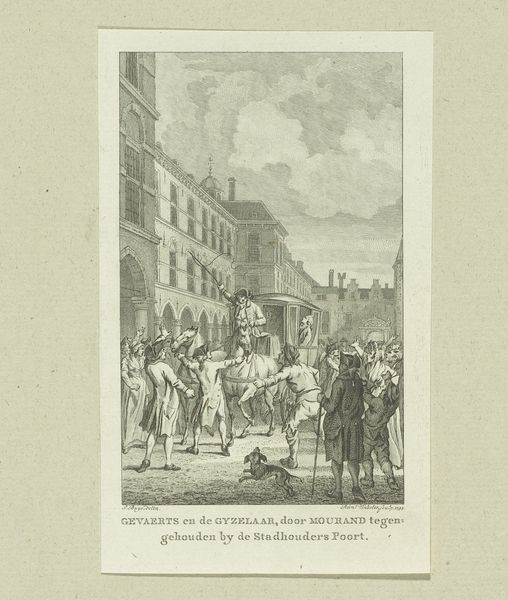
print, engraving
#
narrative-art
# print
#
historical photography
#
romanticism
#
19th century
#
cityscape
#
history-painting
#
engraving
Dimensions: height 230 mm, width 304 mm
Copyright: Rijks Museum: Open Domain
Curator: We are looking at "Verovering van de Mechelsepoort, 1830" or “Conquest of the Mechelsepoort, 1830,” an engraving created by J.J. Cöntgen sometime between 1830 and 1831, now held in the Rijksmuseum. Editor: The scene is immediately charged with a strange calm before what must be a great storm. It looks like the lithographic style flattens the drama and the romantic fervor. Curator: The conquest depicted represents a key moment during the Belgian Revolution. This image becomes a symbolic stand-in, less about the brutal, lived reality of armed conflict than about nation-building. We have this symbolic gate, signifying the divide between the old order and the new nation. Editor: It feels propagandistic to me. I mean, look at how clean everything is. The crisp lines make me question whether this historical document can deliver what it intends to. I would be curious about a counter narrative by Dutch printmakers. Where are their images of war? Curator: Your point about a counter-narrative is spot-on. The composition invites us to invest in a story of the oppressed rising to liberate themselves, though perhaps glossing over some of the more complicated truths of revolution, and warfare in general. The choice to depict this moment through the lens of Romanticism gives it that clean, heroic, almost divine narrative that was popular during the first half of the 19th Century. It presents revolution as a neat, visually palatable event. Editor: The absence of blood or suffering here normalizes conflict, it cleans up colonialism in a way that would perpetuate national pride with less critique. Look at the heroes who appear on horseback, compared to the flat building architecture, the subjects of this work appear in symbolic, hyper-real form to manipulate the viewer. Curator: So we see the echoes of revolution captured and stylized for an audience eager to forge a new national identity. Even the artistic choice of lithography as opposed to some other, grainier or starker mode plays into that smooths, dare I say it, heroic depiction of events. Editor: So this seemingly neutral image ends up revealing so much about how revolutions, even the grimmest episodes of war, get re-packaged to become something entirely different—the foundational stories by which people live.
Comments
No comments
Be the first to comment and join the conversation on the ultimate creative platform.
